Studying Our Living Planet
What is ecology?
When biologists want to talk about life on a global scale,
they use the term biosphere.
Biosphere
All life on Earth and all parts of the Earth in which
life exists, including land, water, and the atmosphere
The biosphere contains every organism, from bacteria living
underground to giant trees in rain forests, whales in polar seas, mold
spores drifting through the air—and, of course, humans. The biosphere
extends from about 8 kilometers above Earth’s surface to as far as 11 kilometers
below the surface of the ocean. |
|
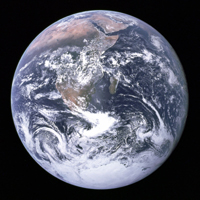 |
The Science of Ecology
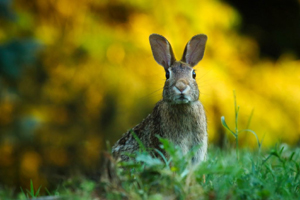 |
| Organisms in the biosphere interact with each other and
with their surroundings, or environment. The study of these interactions
is called ecology.
Ecology
The scientific study of interactions among organisms
and between organisms and their physical environment. |
|
| The root of the word ecology is the Greek word oikos,
which means “house.” So, ecology is the study of nature’s “houses” and
the organisms that live in those houses.
Interactions within the biosphere produce a web of interdependence
between organisms and the environments in which they live. Organisms
respond to their environments and can also change their environments, producing
an ever-changing, or dynamic, biosphere. |
|
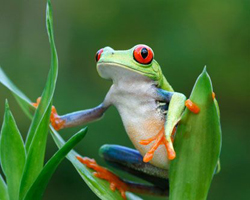 |
Ecology and Economics
The Greek word oikos is also the root of the word
economics. Economics is concerned with human “houses” and human interactions
based on money or trade. Interactions among nature’s “houses” are
based on energy and nutrients. As their common root implies, human
economics and ecology are linked. Humans live within the biosphere
and depend on ecological processes to provide such essentials as food and
drinkable water that can be bought and sold or traded.
Levels of Organization
Ecologists ask many questions about organisms and their
environments. Some ecologists focus on the ecology of individual
organisms. Others try to understand how interactions among organisms
(including humans) influence our global environment. Ecological studies
may focus on levels of organization that include those shown in Figure
3–1.
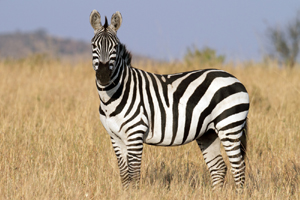 |
|
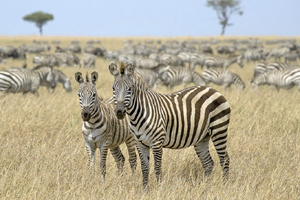 |
Individual Organism
A species is a group of similar organisms
that can breed and produce fertile offspring. |
|
Population
A population is a group of individuals
that belong to the same species and live in the same area. |
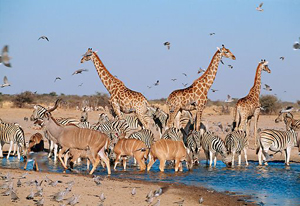 |
|
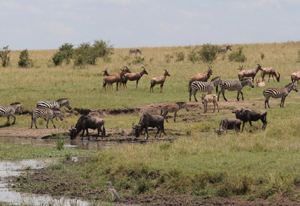 |
Community
An assemblage of different populations that live together
in a defined area is called a community. |
|
Ecosystem
All the organisms that live in a place, together with
their physical environment, is known as an ecosystem. |
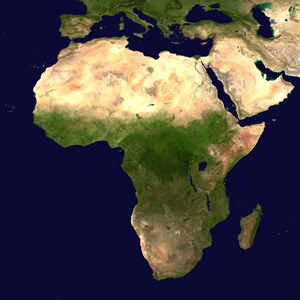 |
|
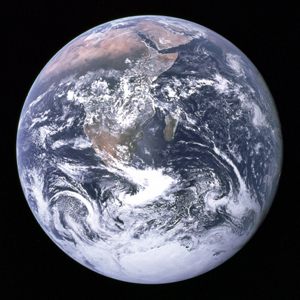 |
Biome
A biome is a group of ecosystems that share
similar climates and typical organisms. |
|
Earth
Our entire planet, with all its organisms and physical
environments, is known as the biosphere. |
What is ecology?
REVIEW & DO
NOW
Answer the following questions: |
| What is the biosphere?
What is ecology? |
|
| Name and define the six levels of organization
from the individual to the entire planet. |
|
Biotic and Abiotic Factors
What are biotic and abiotic factors?
Ecologists use the word environment to refer
to all conditions, or factors, surrounding an organism. Environmental
conditions include biotic factors and abiotic factors, as shown below.
Biotic Factors
The biological influences on organisms are called biotic
factors.
Biotic Factor
Any part of the environment which is alive or that
comes from a living thing with which an organism might interact
Biotic factors relating to a bullfrog, for example, might
include algae it eats as a tadpole, insects it eats as an adult, herons
that eat bullfrogs, and other species that compete with bullfrogs for food
or space.
Abiotic Factors
Physical components of an ecosystem are called abiotic
factors.
Abiotic Factor
Any nonliving part of the environment, such as sunlight,
heat, precipitation, humidity, wind or water currents, and soil type
For example, a bullfrog could be affected by abiotic factors
such as water availability, temperature, and humidity.
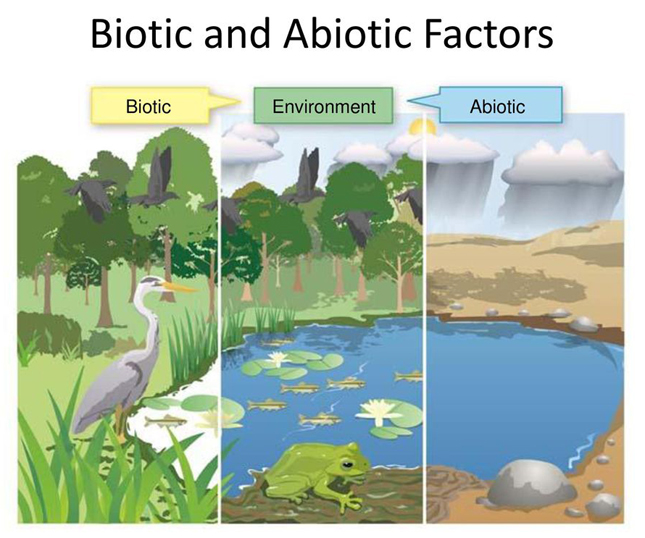
Biotic and Abiotic Factors Together
The difference between biotic and abiotic factors may
seem to be clear and simple. But if you think carefully, you will
realize that many physical factors can be strongly influenced by the activities
of organisms. Bullfrogs hang out, for example, in soft “muck” along
the shores of ponds. You might think that this muck is strictly part
of the physical environment, because it contains nonliving particles of
sand and mud. But typical pond muck also contains leaf mold and other
decomposing plant material produced by trees and other plants around the
pond. That material is decomposing because it serves as “food” for
bacteria and fungi that live in the muck.
Taking a slightly wider view, the “abiotic” conditions
around that mucky shoreline are strongly influenced by living organisms.
A leafy canopy of trees and shrubs often shade the pond’s shoreline from
direct sun and protect it from strong winds. In this way, organisms
living around the pond strongly affect the amount of sunlight the shoreline
receives and the range of temperatures it experiences. A forest around
a pond also affects the humidity of air close to the ground. The
roots of trees and other plants determine how much soil is held in place
and how much washes into the pond. Even certain chemical conditions
in the soil around the pond are affected by living organisms. If
most trees nearby are pines, their decomposing needles make the soil acidic.
If the trees nearby are oaks, the soil will be more alkaline. This
kind of dynamic mix of biotic and abiotic factors shapes every environment.
What are biotic and abiotic factors?
REVIEW & DO
NOW
Answer the following questions: |
| What is the environment?
What are biotic factors?
Give an example of a biotic factor. |
|
What are abiotic factors?
Give an example of an abiotic factor. |
|
The Major Biomes
What abiotic and biotic factors characterize biomes?
Latitude and the heat transported by winds are two factors
that affect global climate. States like Oregon, Montana, and Vermont
have different climates and biological communities, even though those states
are at similar latitudes and are all affected by prevailing winds that
blow from west to east. Why? The reason is because other factors,
among them an area’s proximity to an ocean or mountain range, can influence
climate.
Regional Climates
Oregon, for example, borders the Pacific Ocean.
Cold ocean currents that flow from north to south have the effect of making
summers in the region cool relative to other places at the same latitude.
Similarly, moist air carried by winds traveling west to east is pushed
upward when it hits the Rocky Mountains. This air expands and cools,
causing the moisture in the air to condense and form clouds. The
clouds drop rain or snow, mainly on the upwind side of the mountains—the
side that faces the winds, as seen below. West and east Oregon, then,
have very different regional climates, and different climates mean different
plant and animal communities.
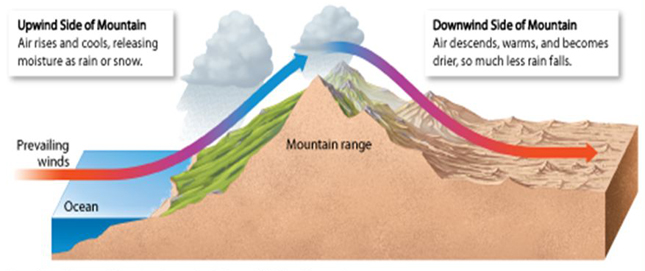
Defining Biomes
Ecologists classify Earth’s terrestrial ecosystems into
at least ten different groups of regional climate communities called biomes.
-
Biomes are described in terms of abiotic factors like
climate and soil type, and biotic factors like plant and animal life.
Major biomes include tropical rain forest, tropical dry forest,
tropical grassland/savanna/shrubland, desert, temperate grassland, temperate
woodland and shrubland, temperate forest, northwestern coniferous forest,
boreal forest/taiga, and tundra. Each biome is associated with seasonal
patterns of temperature and precipitation that can be summarized in a graph
called a climate diagram, like the one shown above. Organisms within
each biome can be characterized by adaptations that enable them to live
and reproduce successfully in the environment. The pages that follow
discuss these adaptations and describe each biome’s climate.
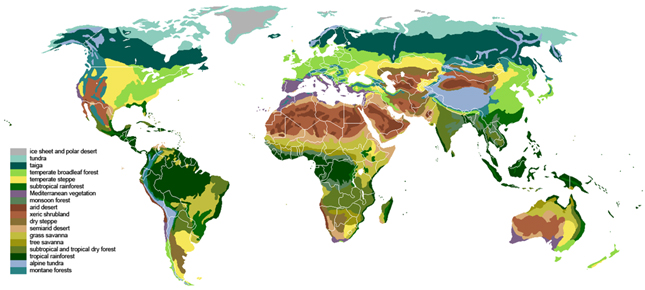
The distribution of major biomes is shown below.
Note that even within a defined biome, there is often considerable
variation among plant and animal communities. These variations can
be caused by differences in exposure, elevation, or local soil conditions.
Local conditions also can change over time because of human activity or
because of the community interactions described in this chapter and the
next.
Earth's Major Biomes
Tropical Rain Forest
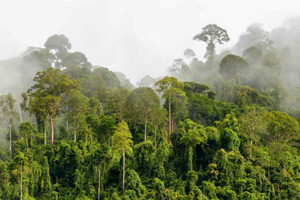 |
| Tropical rain forests are home to more species
than all other biomes combined. As the name suggests, rain forests
get a lot of rain—at least 2 meters of it a year! Tall trees form a dense,
leafy covering called a canopy from 50 to 80 meters above
the forest floor. In the shade below the canopy, shorter trees and
vines form a layer called the understory. Organic matter
on the forest floor is recycled and reused so quickly that the soil in
most tropical rain forests is not very rich in nutrients. |
|
• Abiotic factors
Hot and wet year-round; thin, nutrient-poor soils subject
to erosion
• Biotic factors
Plant life: Understory plants compete for sunlight,
so most have large leaves that maximize capture of limited light.
Tall trees growing in poor shallow soil often have buttress roots for support.
Epiphytic plants grow on the branches of tall plants as opposed to soil.
This allows epiphytes to take advantage of available sunlight while obtaining
nutrients through their host.
Animal life: Animals are active all year.
Many animals use camouflage to hide from predators; some can change color
to match their surroundings. Animals that live in the canopy have
adaptations for climbing, jumping, and/or flight. |
|
Tropical Dry Forest
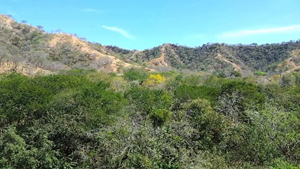 |
| Tropical dry forests grow in areas where
rainy seasons alternate with dry seasons. In most places, a period
of rain is followed by a prolonged period of drought.
• Abiotic factors
Warm year-round; alternating wet and dry seasons; rich
soils subject to erosion |
|
• Biotic factors
Plant life: Adaptations to survive the dry season
include seasonal loss of leaves. A plant that sheds its leaves during
a particular season is called deciduous. Some plants
also have an extra thick waxy layer on their leaves to reduce water loss,
or store water in their tissues.
Animal life: Many animals reduce their need for
water by entering long periods of inactivity called estivation.
Estivation is similar to hibernation, but typically takes place during
a dry season. Other animals, including many birds and primates, move
to areas where water is available during the dry season. |
|
Tropical Grassland
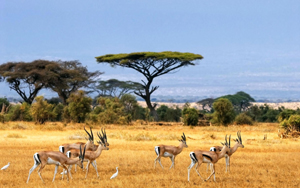 |
The Savanna or Shrubland
This biome receives more seasonal rainfall than deserts
but less than tropical dry forests. Grassy areas are spotted with
isolated trees and small groves of trees and shrubs. Compacted soils,
fairly frequent fires, and the action of large animals—for example, rhinoceroses
and elephants—prevent some areas from turning into dry forest. |
|
• Abiotic factors
Warm; seasonal rainfall; compact soils; frequent fires
set by lightning
• Biotic factors
Plant life: Plant adaptations are similar to those
in the tropical dry forest, including waxy leaf coverings and seasonal
leaf loss. Some grasses have a high silica content that makes them
less appetizing to grazing herbivores. Also, unlike most plants,
grasses grow from their bases, not their tips, so they can continue to
grow after being grazed.
Animal life: Many animals migrate during the dry
season in search of water. Some smaller animals burrow and remain
dormant during the dry season. |
|
Desert
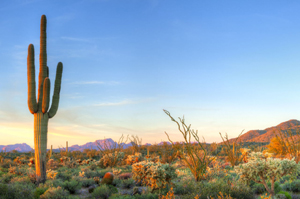 |
| Deserts have less than 25 centimeters of
precipitation annually, but otherwise vary greatly, depending on elevation
and latitude. Many deserts undergo extreme daily temperature changes,
alternating between hot and cold.
• Abiotic factors
Low precipitation; variable temperatures; soils rich
in minerals but poor in organic material |
|
• Biotic factors
Plant life: Many plants, including cacti, store
water in their tissues, and minimize leaf surface area to cut down on water
loss. Cactus spines are actually modified leaves. Many desert
plants employ special forms of photosynthesis that enable them to open
their leaf pores only at night, allowing them to conserve moisture on hot,
dry days.
Animal life: Many desert animals get the water
they need from the food they eat. To avoid the hottest parts of the
day, many are nocturnal—active only at night. Large or elongated
ears and other extremities are often supplied with many blood vessels close
to the surface. These help the animal lose body heat and regulate
body temperature. |
|
Temperate Grassland
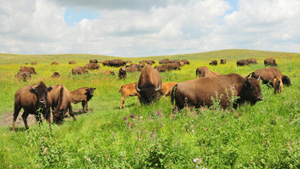 |
| Plains and prairies, underlain by fertile
soils, once covered vast areas of the midwestern and central United States.
Periodic fires and heavy grazing by herbivores maintained plant communities
dominated by grasses. Today, most have been converted for agriculture
because their soil is so rich in nutrients and is ideal for growing crops. |
|
• Abiotic factors
Warm to hot summers; cold winters; mode rate seasonal
precipitation; fertile soils; occasional fires
• Biotic factors
Plant life: Grassland plants—especially grasses,
which grow from their base—are resistant to grazing and fire. Dispersal
of seeds by wind is common in this open environment. The root structure
and growth habit of native grassland plants helps establish and retain
deep, rich, fertile topsoil.
Animal life: Because temperate grasslands are such
open, exposed environments, predation is a constant threat for smaller
animals. Camouflage and burrowing are two common protective adaptations. |
|
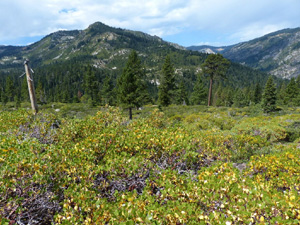 |
Temperate Woodland
In open woodlands, large areas of grasses and wildflowers
such as poppies are interspersed with oak and other trees. Communities
that are more shrubland than forest are known as chaparral. Dense
low plants that contain flammable oils make fire a constant threat.
• Abiotic factors
Hot dry summers; cool moist winters; thin, nutrient-poor
soils; periodic fires |
|
• Biotic factors
Plant life: Plants in this biome have adapted
to drought. Woody chaparral plants have tough waxy leaves that resist
water loss. Fire resistance is also important, although the seeds
of some plants need fire to germinate.
Animal life: Animals tend to be browsers—meaning
they eat varied diets of grasses, leaves, shrubs, and other vegetation.
In exposed shrubland, camouflage is common. |
|
Temperate Forest
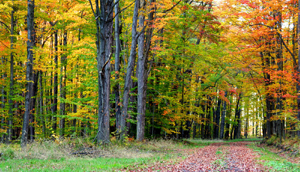 |
| Temperate forests are mostly made up of deciduous
and evergreen coniferous trees. Coniferous trees, or
conifers, produce seed-bearing cones, and most have leaves shaped like
needles, which are coated in a waxy substance that helps reduce water loss.
These forests have cold winters. In autumn, deciduous trees shed
their leaves. In the spring, small plants burst from the ground and
flower. |
|
| Fertile soils are often rich in humus,
a material formed from decaying leaves and other organic matter.
• Abiotic factors
Cold to moderate winters; warm summers; year-round precipitation;
fertile soils
• Biotic factors
Plant life: Deciduous trees drop their leaves
and go into a state of dormancy in winter. Conifers have needlelike
leaves that minimize water loss in dry winter air.
Animal life: Animals must cope with changing weather.
Some hibernate; others migrate to warmer climates. Animals that do
not hibernate or migrate may be camouflaged to escape predation in the
winter when bare trees leave them more exposed. |
|
Northwestern Coniferous Forest
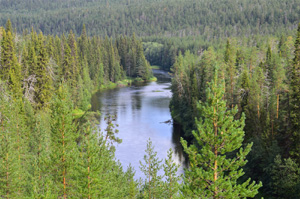 |
| Mild moist air from the Pacific Ocean influenced
by the Rocky Mountains provides abundant rainfall to this biome.
The forest includes a variety of conifers, from giant redwoods to spruce,
fir, and hemlock, along with flowering trees and shrubs such as dogwood
and rhododendron. Moss often covers tree trunks and the forest floor.
Because of its lush vegetation, the northwestern coniferous forest is sometimes
called a “temperate rain forest.” |
|
• Abiotic factors
Mild temperatures; abundant precipitation in fall, winter,
and spring; cool dry summers; rocky acidic soils
• Biotic factors
Plant life: Because of seasonal temperature variation,
there is less diversity in this biome than in tropical rain forests.
However, ample water and nutrients support lush, dense plant growth.
Adaptations that enable plants to obtain sunlight are common. Trees
here are among the world’s tallest.
Animal life: Camouflage helps insects and ground-dwelling
mammals avoid predation. Many animals are browsers—they eat a varied
diet—an advantage in an environment where vegetation changes seasonally. |
|
Boreal Forest
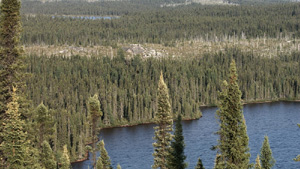 |
| Dense forests of coniferous evergreens along
the northern edge of the temperate zone are called boreal forests, or taiga.
Winters are bitterly cold, but summers are mild and long enough to allow
the ground to thaw. The word boreal comes from the Greek word for
“north,” reflecting the fact that boreal forests occur mostly in the northern
part of the Northern Hemisphere. |
|
• Abiotic factors
Long cold winters; short mild summers; moderate precipitation;
high humidity; acidic, nutrient-poor soils
• Biotic factors
Plant life: Conifers are well suited to the boreal-forest
environment. Their conical shape sheds snow, and their wax-covered
needlelike leaves prevent excess water loss. In addition, the dark
green color of most conifers absorbs heat energy.
Animal life: Staying warm is the major challenge
for animals. Most have small extremities and extra insulation in
the form of fat or downy feathers. Some migrate to warmer areas in
winter. |
|
Tundra
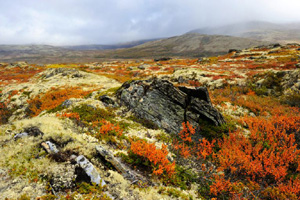 |
| The tundra is characterized by permafrost,
a layer of permanently frozen subsoil. During the short cool summer,
the ground thaws to a depth of a few centimeters and becomes soggy.
In winter, the top layer of soil freezes again. This cycle of thawing
and freezing, which rips and crushes plant roots, is one reason that tundra
plants are small and stunted. Cold temperatures, high winds, a short
growing season, and humus-poor soils also limit plant height. |
|
• Abiotic factors
Strong winds; low precipitation; short and soggy summers;
long, cold, dark winters; poorly developed soils; permafrost
• Biotic factors
Plant life: By hugging the ground, mosses and
other low-growing plants avoid damage from frequent strong winds.
Seed dispersal by wind is common. Many plants have adapted to growth
in poor soil. Legumes, for example, have nitrogen-fixing bacteria
on their roots.
Animal life: Many animals migrate to avoid long
harsh winters. Animals that live in the tundra year-round display
adaptations, among them natural antifreeze, small extremities that limit
heat loss, and a varied diet. |
|
Other Land Areas Not Easily Classified
Some land areas do not fall neatly into one of the major
biomes.
-
Because they are not easily defined in terms of a typical
community of plants and animals, mountain ranges and polar ice caps are
not usually classified into biomes.
Mountain Ranges
Mountain ranges exist on all continents and in many biomes.
On mountains, conditions vary with elevation. From river valley to
summit, temperature, precipitation, exposure to wind, and soil types all
change, and so do organisms. If you climb the Rocky Mountains in
Colorado, for example, you begin in a grassland. |
|
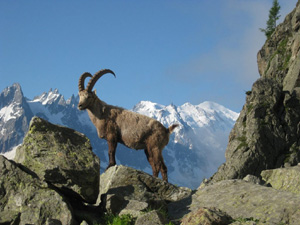 |
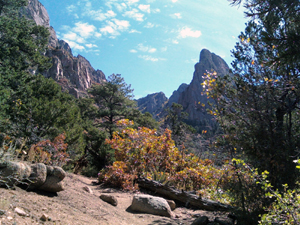 |
| You then pass through pine woodland and then a forest
of spruce and other conifers. Thickets of aspen and willow trees
grow along streambeds in protected valleys. Higher up, soils are
thin. Strong winds buffet open fields of wildflowers and stunted
vegetation resembling tundra. Glaciers are found at the peaks of
many ranges. |
|
Polar Ice Caps
| Polar regions border the tundra and are cold year-round.
Plants are few, though some algae grow on snow and ice. Where rocks
and ground are exposed seasonally, mosses and lichens may grow. Marine
mammals, insects, and mites are the typical animals. In the north,
where polar bears live, the Arctic Ocean is covered with sea ice, although
more and more ice is melting each summer. |
|
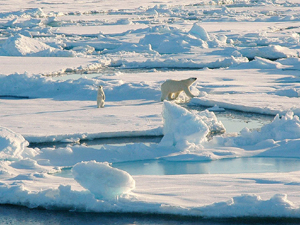 |
In the south, the continent of Antarctica, inhabited by many
species of penguins, is covered by ice nearly 5 kilometers thick in places.
What abiotic and biotic factors
characterize biomes?
REVIEW & DO
NOW
Answer the following questions: |
| List and distinguish Earth's ten major biomes. |
|
| Why are mountain ranges and polar ice caps not classified
as biomes? |
|
Ecological Methods
What methods are used in ecological studies?
Some ecologists, like the one in Figure 3–3, use measuring
tools to assess changes in plant and wildlife communities. Others
use DNA studies to identify bacteria in marsh mud. Still others use
data gathered by satellites to track ocean surface temperatures.
Regardless of their tools, modern ecologists use three
methods in their work: observation, experimentation, and modeling.
Each of these approaches relies on scientific methodology to guide inquiry.
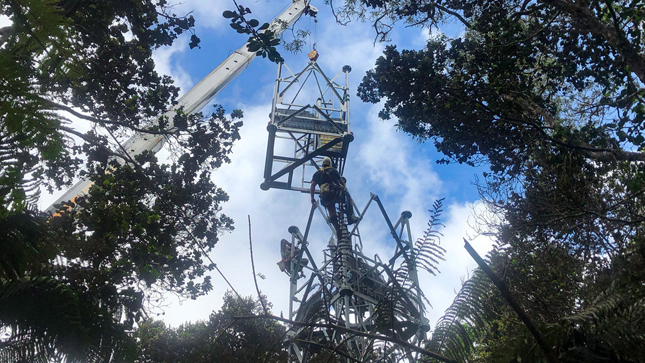
Observation
Observation is often the first step in asking ecological
questions. Some observations are simple: Which species live here?
How many individuals of each species are there? Other observations are
more complex: How does an animal protect its young from predators?
These types of questions may form the first step in designing experiments
and models.
| Experimentation
Experiments can be used to test hypotheses. An ecologist
may, for example, set up an artificial environment in a laboratory or greenhouse
to see how growing plants react to different conditions of temperature,
lighting, or carbon dioxide concentration. Other experiments carefully
alter conditions in selected parts of natural ecosystems. |
|
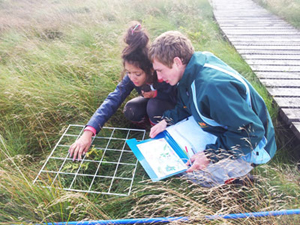 |
Modeling
Many ecological events, such as effects of global warming
on ecosystems, occur over such long periods of time or over such large
distances that they are difficult to study directly. Ecologists make
models to help them understand these phenomena. Many ecological models
consist of mathematical formulas based on data collected through observation
and experimentation. Further observations by ecologists can be used
to test predictions based on those models.
What methods are used in ecological
studies?
REVIEW & DO
NOW
Answer the following questions: |
| What are three of the methods used by ecologists to study
life on Earth? |
|
|
|


